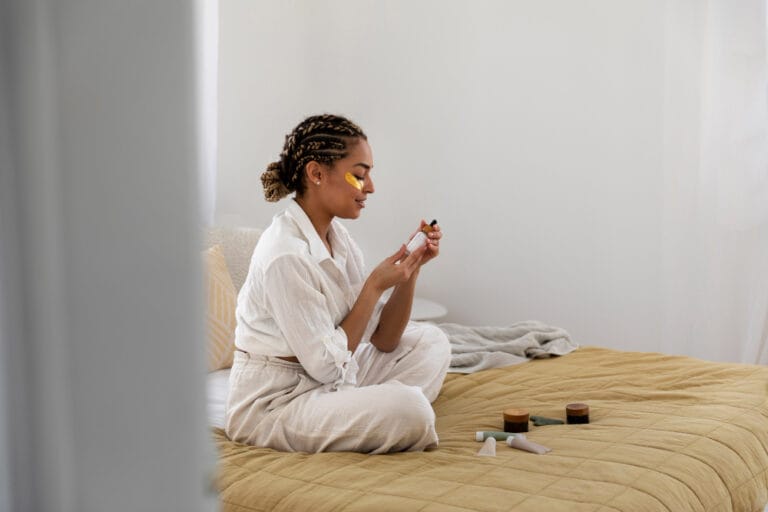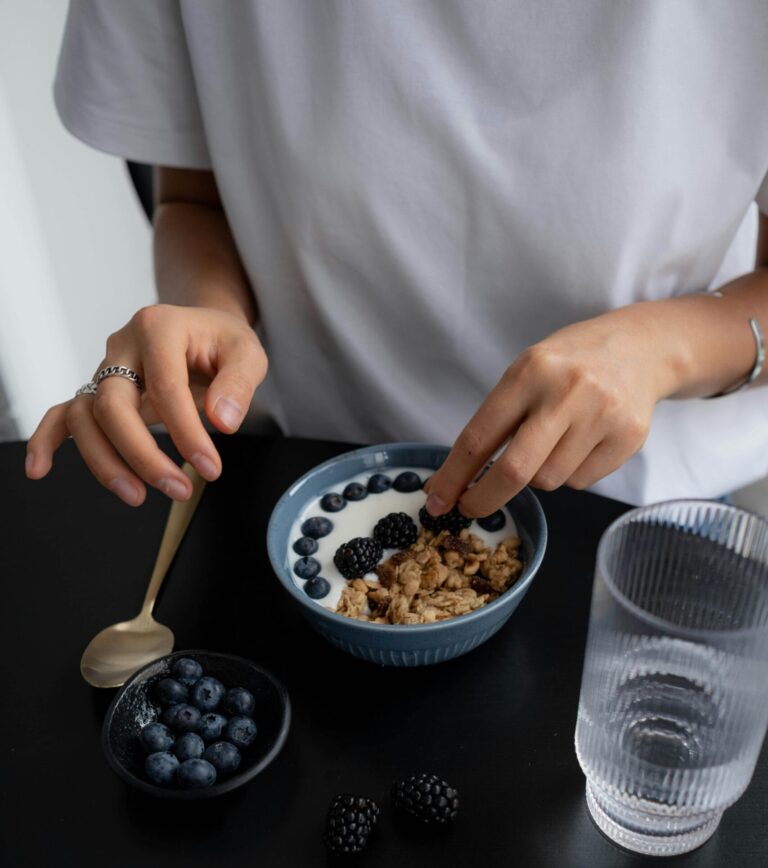FREE SHIPPING OVER $50
10 Skincare Habits You Think Are Helping—But Are Actually Speeding Up Aging

We’ve all been there: You meticulously follow a skincare routine, spending time and money on serums and creams, convinced you are fighting the good fight against wrinkles and fine lines. You are consistent with your anti-aging efforts, yet the results just aren’t matching the effort. Why? Because the enemy of youthful skin isn’t always something you aren’t doing; sometimes, it’s a bad skincare habit you’ve unknowingly adopted—a ritual you genuinely believe is helping but is actually driving the visible signs of aging faster than you think.
The truth is that many common, seemingly harmless skincare practices—passed down from magazines, friends, or social media trends—are completely outdated and actively damage your skin barrier, trigger inflammation, and accelerate the breakdown of collagen. To truly maintain a youthful complexion and see results from your high-quality products, you must first stop the self-sabotage. Here are the 10 skincare habits that experts warn are secretly speeding up aging, and exactly how to fix them today.
The Cleansing Catastrophe: Over-Washing and Aggression
A clean slate is essential, but many people go overboard, mistaking that tight, squeaky feeling for “clean.” This aggressive approach strips the skin of its natural defenses, opening the door to early aging by damaging the protective moisture barrier. We often believe a thorough cleanse requires harsh methods, but the reverse is true.
1. Over-Cleansing Your Face
You might think washing your face multiple times a day is key to keeping pores clear. However, over-cleansing—especially with harsh, stripping cleansers—destroys your skin’s lipid barrier. This barrier is essential for retaining moisture. When the barrier is compromised, your skin loses hydration rapidly, leading to dryness, irritation, and, most importantly, the premature appearance of fine lines and wrinkles. Furthermore, dehydrated skin appears duller and less plump, instantly making you look older.
The Fix: Limit cleansing to twice a day—morning and night—or just once in the morning if your skin is naturally dry. Use a gentle, pH-balanced, non-foaming cleanser that cleans without leaving your skin feeling tight or squeaky. This simple change drastically supports skin barrier repair.
2. Aggressive Towel Drying
After washing, many of us rub our faces vigorously with a rough bath towel. This rough friction causes unnecessary pulling on the delicate skin around your eyes and mouth, an area already prone to collagen breakdown. Over time, this repeated stress contributes to sagging and elasticity loss. The repeated mechanical trauma is a form of low-level, self-inflicted damage.
The Fix: Pat your skin dry gently with a designated, clean, soft towel, or even a soft cotton t-shirt. Leave your skin slightly damp before immediately applying your serums and moisturizer. This not only avoids friction but also helps trap the extra moisture from your next product layer, maximizing hydration.
Exfoliation Errors: Too Much of a Good Thing
Exfoliation is a cornerstone of a good anti-aging routine because it clears away dead cells and boosts cell turnover. Unfortunately, it’s also the single most common routine where people make damaging mistakes that trigger inflammation, the root cause of much premature aging.
3. Relying on Physical Scrubs with Large Particles
Those gritty apricot or walnut shell scrubs might feel like they are working because they are rough, but those large, irregularly shaped granules cause tiny, invisible micro-tears in your skin. These tears trigger inflammation, which, ironically, is one of the biggest drivers of collagen degradation. When collagen breaks down, your skin loses its structure and firmness, making wrinkles more prominent. Your skin is not a floor that needs scrubbing; it is a delicate organ.
The Fix: Ditch the rough physical scrubs entirely. Instead, switch to chemical exfoliants containing gentle Alpha Hydroxy Acids (AHAs) like Lactic or Glycolic Acid, or Beta Hydroxy Acids (BHAs) like Salicylic Acid. Use them judiciously—no more than two to three times per week—to safely brighten and smooth your skin without damaging the barrier.
4. Over-Exfoliating in General
Even with gentle chemical exfoliants, using them daily is a mistake that can speed up aging. When you exfoliate too frequently, you strip away the protective layer before your skin has a chance to repair itself and rebuild its lipid barrier. This results in redness, sensitivity, and persistent irritation. Chronic inflammation from over-exfoliation weakens the skin’s defense mechanisms and directly contributes to premature wrinkles and hyperpigmentation.
The Fix: Stick to the 2-3 times per week recommendation. Pay attention to your skin; if you notice redness, tightness, or stinging when applying other products, take a full week off all forms of exfoliation. Prioritize skin barrier repair above all else, ensuring that the skin’s natural defense system remains intact.
Product Misuse: The Serum Sabotage
In the quest for youthful skin, people often misuse powerful, concentrated products, inadvertently causing irritation that outweighs any potential benefit. Strong ingredients require careful introduction and consistent support.
5. Using Too Much Retinol Too Fast
Retinoids (Vitamin A derivatives) are powerhouse anti-aging ingredients proven to boost collagen production. However, when you start using them, or if you use too high a concentration too frequently, you risk developing “retinoid burn” or extreme irritation. This initial redness and peeling might be seen as a sign it’s “working,” but prolonged irritation causes the exact inflammation that accelerates aging.
The Fix: Start slow with any anti-aging ingredients. Begin with a low-concentration retinoid (like 0.25%) just once or twice a week. Gradually increase the frequency as your skin builds tolerance. Only graduate to a higher strength if your skin shows no signs of dryness or flaking. Moisture is key when using any form of Vitamin A; apply a generous moisturizer after the retinoid.
6. Layering Too Many Active Ingredients
Your desire to target every skin concern at once by layering a vitamin C serum, a salicylic acid toner, and a niacinamide serum is admirable but dangerous. Combining multiple active ingredients that all change the skin’s pH or cause some level of cellular turnover can result in a harsh cocktail that overstimulates and irritates the skin barrier. This chemical assault causes redness, sensitivity, and, ultimately, accelerates signs of aging.
The Fix: Be strategic and minimalist. Separate your routines: Use powerful antioxidants like Vitamin C in the morning (under sunscreen) and use your retinoids or exfoliating acids at night. Never mix retinoids with AHAs/BHAs simultaneously unless specifically formulated to be used together. Keep your routine focused on one primary goal per application to avoid compromising your skin’s integrity.
Environmental and Lifestyle Lapses
Some of the most detrimental bad skincare habits don’t even involve product application—they involve how you interact with your environment and daily habits. These cumulative errors cause silent damage.
7. Neglecting Your Neck and Chest
It’s easy to focus solely on your face, but your neck and chest (décolletage) have thinner, more delicate skin that shows signs of aging just as quickly, if not faster. If you treat your face with high-end creams but stop at the jawline, you create a noticeable disparity in skin texture and pigmentation. This inconsistent application instantly gives away your age because the thinning skin on the neck lacks the collagen density of the face.
The Fix: Extend your entire skincare routine—especially your antioxidant serums, moisturizer, and, most crucially, your sunscreen—down to your nipples. Treat your neck and chest as extensions of your face for consistent anti-aging results.
8. Skipping Sunscreen on Cloudy Days or Indoors
You know you need sunscreen at the beach, but thinking you can skip it when the sun isn’t blazing is a massive, age-accelerating error. UV radiation (specifically UVA rays) penetrates clouds and windows, reaching you even when you’re driving or sitting by a sunny office window. UVA rays are the primary culprits in photoaging, causing DNA damage, generating free radicals, and destroying collagen deep within the dermis.
The Fix: Apply a broad-spectrum SPF 30 or higher sunscreen every single day, year-round, regardless of weather or indoor location. Make this the non-negotiable final step of your morning skincare routine. Reapply every two hours when outdoors for extended periods to ensure maximum protection against UV damage.
Subtle Sabotage: Habits You Don’t Even Notice
These seemingly small, innocuous daily actions can create cumulative damage over time that you only notice years later. Stopping these subtle actions immediately protects your long-term skin health.
9. Sleeping on the Same Pillowcase for Days
You’ve completed your perfect nighttime routine, but then you press your freshly cleaned face against a pillowcase covered in bacteria, oils, sweat, and residual hair products. This buildup can trigger inflammation, breakouts, and chronic irritation. Furthermore, sleeping on a rough cotton pillowcase can cause “sleep wrinkles”—crease marks that eventually set permanently, particularly for side sleepers who press their faces hard into the fabric every night.
The Fix: Change your pillowcase at least twice a week. Consider switching to a silk or satin pillowcase. These materials create less friction on the skin and hair, reducing both temporary sleep lines and long-term damage caused by tugging and creasing.
10. Frequently Touching or Picking Your Face
It’s a nervous habit or a reaction to a visible blemish, but constantly touching your face transfers dirt, bacteria, and oils from your hands to your skin, leading to clogged pores and breakouts. Picking at acne or blackheads, however, is a direct ticket to accelerated aging through trauma. Picking causes deep inflammation, damages the skin structure, and leaves behind permanent scars and hyperpigmentation—damage that takes immense effort and time to correct.
The Fix: Be conscious of where your hands are. If you have a breakout, use targeted acne patches instead of squeezing. If you must extract something, seek professional help from a licensed esthetician or dermatologist to minimize trauma and ensure optimal skin barrier repair and less noticeable long-term scarring.
Conclusion
By identifying and correcting these 10 skincare habits, you stop the cycle of self-sabotage. True anti-aging success comes from protecting the skin barrier and reducing inflammation, allowing your high-quality products to finally deliver on their promise of a smooth, glowing, and youthful complexion.
Related Articles
- She Looks 10 Years Younger—Thanks to Just 2 Daily Habits Anyone Can Try
- Best Serums for Dark Spots: Dermatologist-Recommended Picks to Transform Your Skin
- The Perfect Diet Plan Doesn’t Exist, But This Comes Close
- 9 Habits That Are Making Your Skin Age Faster Than It Should
- The 10 K-Beauty Trends Everyone Over 40 Should Be Using for Firmer, Plumper Skin



